Learn How to Train your Rabbit and Prepare Them for a Harness & Leash
To begin with, a word of advice:
Harness training is not for all rabbits. In fact, it would be safe to say that with most rabbits, you really shouldn’t train them to use one.
The reason is simple enough: rabbits are prey animals and don’t like being picked up. They also get scared easily by noise and sudden movements.
If your rabbit gets spooked easily and hates being in a carrier for simple trips to the vet, then the likelihood is that your rabbit will hate the harness and try it get this “Foreign thing” off itself.
If this happens, then I would not recommend going any further with harness training. You should take the harness off and stow it away, maybe for a future rabbit.

It’s All About the Temperament … and Fear
In my 25 years of having rabbits, Speedy is the only one who is trained to use a harness.
My previous rabbits would just go mad and fight to get the harness off, and with that reaction, I knew not to try again.
With those rabbits, it just wasn’t meant to be because they had the wrong temperament for harness training.
Speedy is the only one who was the right temperament and who was relaxed enough to trust nothing bad was happening to him and most of all, he is the only rabbit I have had who is completely without fear.
He has no fear of noises, or of sudden movements. He is even not bothered by low flying air force jets that sometimes fly over our house.
When it comes to dogs and cats and other animals, he is even not bothered by them …and Horses….well he loves horses.








How to Train a Rabbit to Wear a Harness: Steps to Take
1. Pick the Right Harness
So you see that harness training is not for all rabbits, but for those of you who wish to try, then the first step is to pick the right harness for your rabbit.
There are 2 types of harnesses that you can use.
There is the Vest style harness or the H style harness.
I have both for Speedy as you can see below….
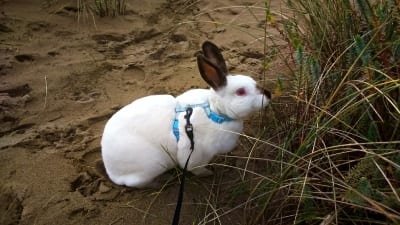
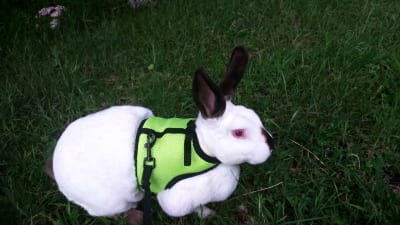
The first harness I got was the vest harness because everybody was recommending them as the best type to use on rabbits.
But actually, I use the H style harness the most on Speedy simply because it is more adjustable on the fit.
This makes it more comfortable for rabbits to wear and it is less restrictive on the fit.
To be honest, Speedy actually prefers the H harness to his vest one, and that is the important thing.








2. Fit the Harness on Your Rabbit
To start off the “training” of your rabbit to wear and use a harness, you need to fit the harness on your rabbit.
This needs to be fitted tight enough that you can slide 2 or 3 fingers between the harness and your rabbit.
This way, it doesn’t make the rabbit feel like he or she is being strangled but is still tight enough that it can’t slip off the head or body.
If the head can slip through, then so can the body and your rabbit will escape from the harness.
You really don’t want that to happen if you are out and about and away from home.








3. A Time to Adjust and Get Used to It
Let your rabbit get used to wearing the harness at home before attaching the leash.
Your rabbit needs to be that comfortable with the harness that it will feel just like a second skin.
You’ll be able to tell this when they’ll be running around your house and doing all the things they normally do each day while wearing the harness.
With Speedy, I would put it on him for about half an hour each day and then let him play with it on.
He would groom for a few minutes and then go off exploring out in the garden.
I did this for about a week.
Lucky for me, though, Speedy took it all in stride the first time I put the harness on him.
But not all rabbits are the same so some may take longer to be completely comfortable with the harness. Just remember to be patient and give them time to adjust.
Other rabbits may never be comfortable with a harness.
If that is the case, you should stop putting the harness on your rabbit because you should never force your rabbit to wear a harness if they are not happy with it.
All you will do is scare and stress out your rabbit.








4. Attach the Leash
The next step is attaching the leash. With rabbits, you should attach a stretchy elastic leash to the harness.
This allows for tension in the leash but it also gives a little so that your rabbit doesn’t choke.
Normal leashes won’t allow the give of an elastic stretchy leash and will choke your rabbit.
Normal leashes should never be used without the elastic leash.
I use 2 leashes: the elastic one is clipped to Speedy’s harness, and I have a retractable leash clipped to the elastic one. See below:

5. Start with Short Walks
You need to let your rabbit wander around your garden (if you have one) or in your home with the leash attached so that he or she can get used to it.
Leave a bit of slack between you and your rabbit and just follow closely behind it.
Let your rabbit go where it wants to go, not where you want to go.
Rabbits are stubborn and will dig their heels in and refuse to budge. Then, they will fight to get the harness off.
You want the experience to be fun for your rabbit.
When you walk your rabbit, you need to let it go where it wants to go.
Keep these walks short to begin with, for about 10 to 15 minutes.
Over time, gradually increase the periods your rabbit is on the leash.
Keeping the experience a positive one is the main trick with harness and leash training.








6. All Ready for an Adventure?
You will find that, after a while, your time outside with your rabbit will be much longer.
When that happens you will both be ready for short little adventures. You might not want to go to different places with your rabbit, you may just want to stick to your garden.
Some people don’t have a safe secure garden that their rabbit can explore. This usually happens when there’s no fence to keep them protected or even when there are predators around (like there are in the US).
Using a leash will offer your rabbit the safe opportunity to explore your garden with you watching over them.
It will also help increase the trust and bond between you and your rabbit.

But you may want to take your rabbit it out for adventures as I do with Speedy.
This creates a whole new set of potential problems.
It usually involves people taking their dogs for a walk or even predators likely to jump out from the undergrowth.
You need to be completely aware of your surroundings and of other animals.








(Bonus) 7. How to Deal with Dogs and/or Other People:
If you see a dog approaching, you just calmly pick your rabbit up and walk the other way or wait until the dog has moved off before putting your rabbit down.
You will also find that people will approach you to find out about your rabbit.
Again, just keep calm and relaxed, especially if they have children. These will likely want to pet your rabbit.
This is your choice to allow, or not.
Just remember to stay relaxed while your rabbit is in your arms as they will pick up on your tension.
And most of all, keep interaction short. You don’t want to stress your rabbit with strange people wanting to touch them.
But for your first adventures, I would pick quiet places where there a few people.
Do this until both you and your rabbit are comfortable and confident in going out together.








Conclusion:
These have been my tips and advice on how to train a rabbit to wear a harness.
Have you harness trained your rabbit and have any tips to share? Then leave them all in a comment!

Rachel is the Mum of Speedy, a male Himalayan Rex Rabbit who is over 7 years old. She started his blog to help people find out more about rabbits and other small house pets.
Anything from how to welcome them into your home to how to feed and hold them correctly, Rachel is the one to ask!
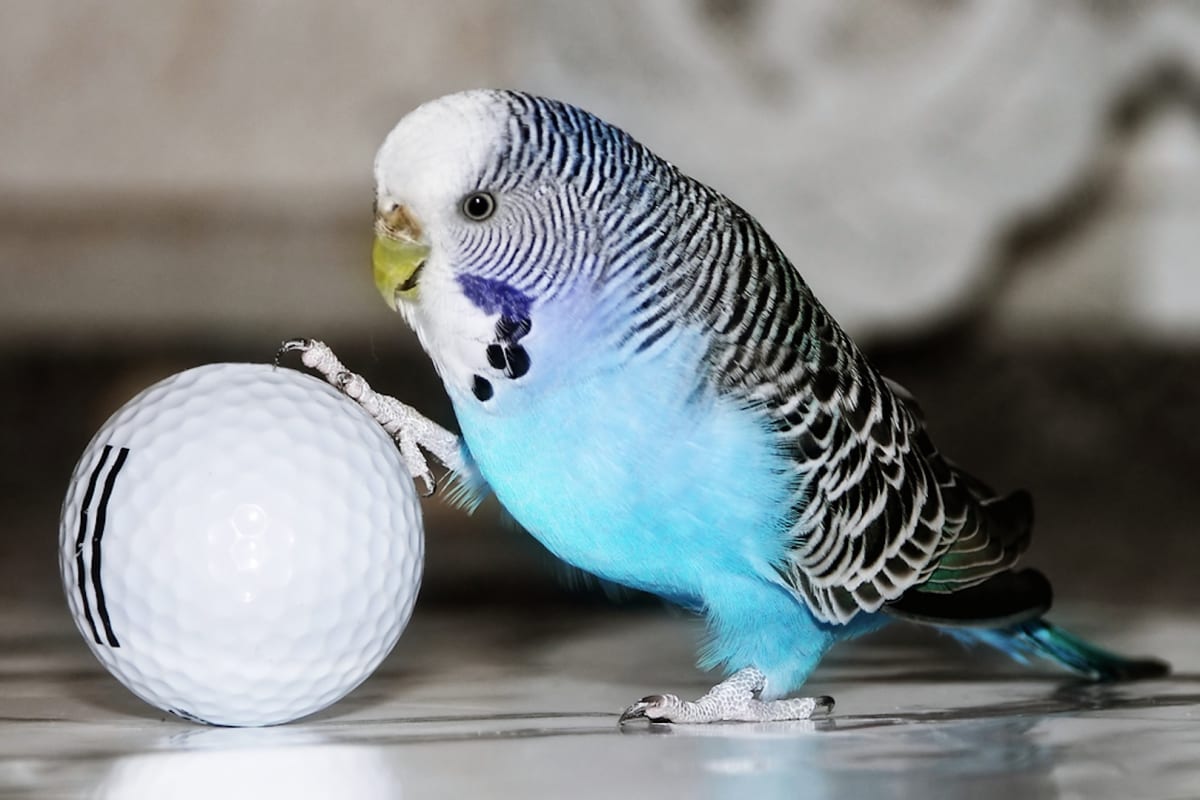

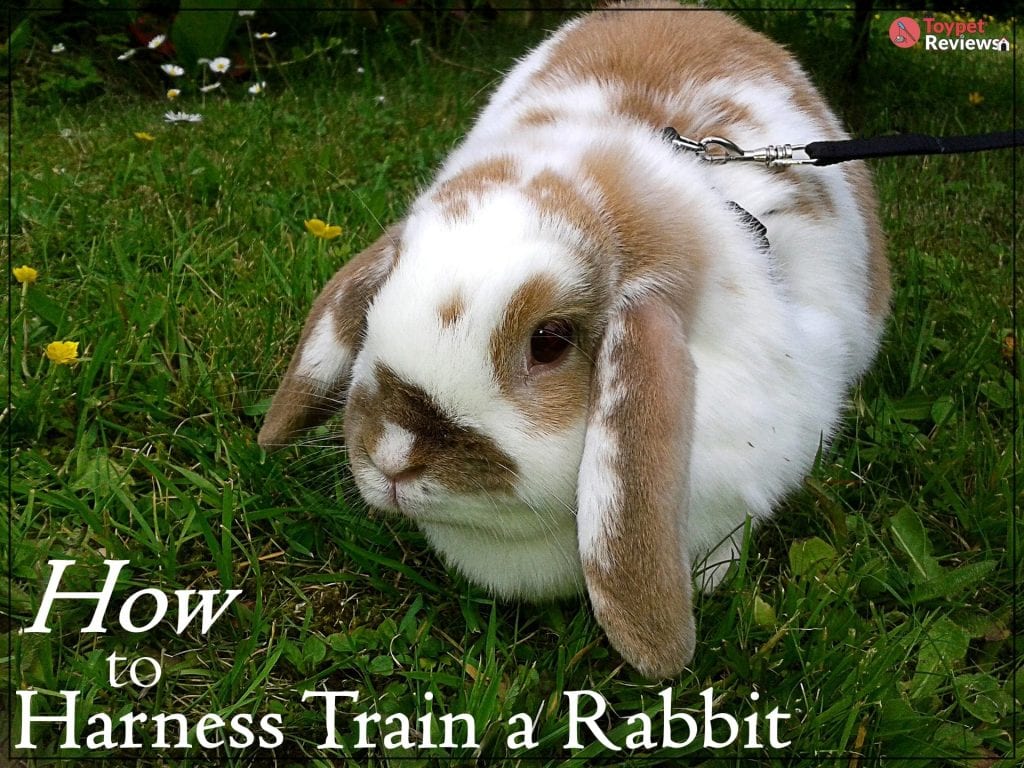


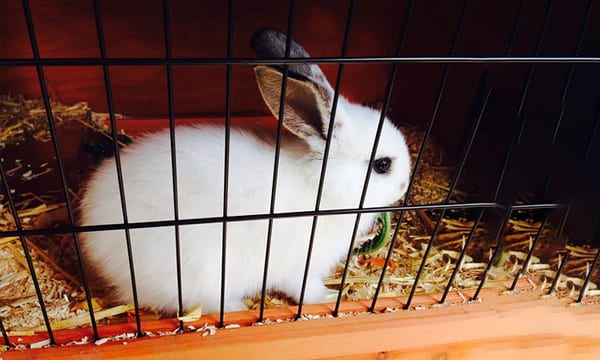


Fab article Rachel!!!! I think Speedy is one amazing rabbit! And he has an amazing Mum….
I had a friend here who had her 2 rabbits Gracie (Mom) & Puds (daughter) leash trained. They were bomb proof like Speedy…..I miss them coming to visit. People were always respectful of the rabbits.
Thanks for a informative article.
Sherri-Ellen T-D.